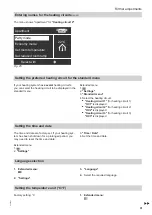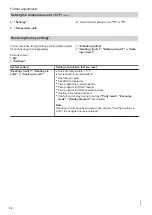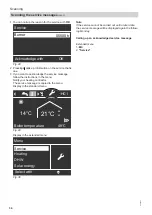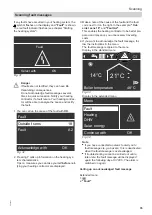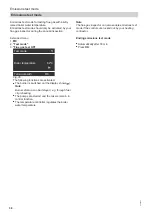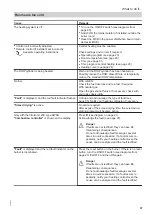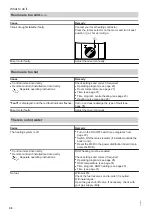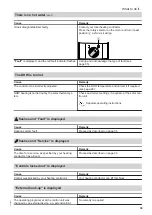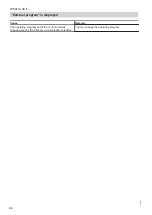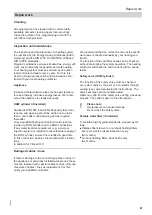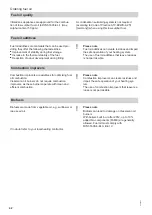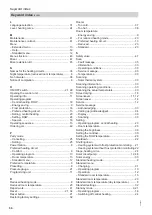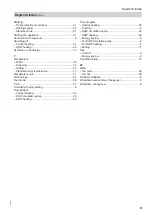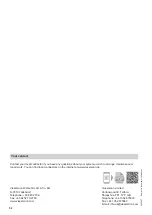
45
Mixer extension kit
Assembly (accessory) for controlling a heating circuit
with mixer.
See "Mixer".
Screed drying
Your heating contractor can, for example, enable this
function for screed drying in your new build or exten-
sion. This means your screed is dried in line with a
fixed time program (temperature/time profile) that is
appropriate for the building materials used.
The screed drying function affects heating circuits with
mixer:
■
All rooms are heated according to the temperature/
time profile.
Your settings for central heating have no effect for
the duration of screed drying (max. 32 days).
■
DHW heating is carried out (but priority control is
cancelled).
Underfloor heating system
Underfloor heating systems are slow, low temperature
heating systems and only respond very slowly to short
term temperature changes.
Therefore, heating to the reduced room temperature at
night and enabling
"Economy mode"
during short
absences do not result in significant energy savings.
Heating mode
Standard heating mode
For periods when you will be at home during the day,
use the standard room temperature to heat your
rooms. Set the periods (time phases) using the time
program for central heating.
Reduced heating mode
For periods when you will be absent or during the
night, heat your rooms to the reduced room tempera-
ture. Set the periods using the time program for central
heating. With underfloor heating systems, reduced
heating mode only yields limited energy savings (see
"Underfloor heating").
Room temperature-dependent heating mode
With room temperature-dependent operation a room
will be heated until the selected set room temperature
has been reached. A separate temperature sensor
must be installed in the room for this purpose.
The heating output is regulated independent of the out-
side temperature.
Weather-compensated heating mode
In weather-compensated operation, the flow tempera-
ture is controlled according to the outside temperature.
This means that only that amount of heat is generated
that is necessary to heat the rooms to the room tem-
perature you selected.
The outside temperature is captured and transmitted to
the control unit by a sensor fitted outside the building.
Heating curve
Heating curves illustrate the relationship between the
outside temperature, room temperature (set value) and
boiler water or (heating circuit) flow temperature. The
lower the outside temperature, the higher the boiler
water temperature or heating circuit flow temperature.
In order to guarantee sufficient heat and minimum fuel
consumption at any outside temperature, the condi-
tions of your building and your heating system must be
taken into consideration. For this, you can adapt the
heating curve yourself.
Note
If your heating system includes heating circuits with
mixers, then the flow temperature for the heating cir-
cuit without mixer is higher by a selected differential
than the flow temperature for the heating circuits with
mixer.
The illustrated heating curves apply with the following
settings:
■
Heating curve level = 0
■
Standard room temperature (set value) = 20 °C
Appendix
Terminology
(cont.)
5592667

